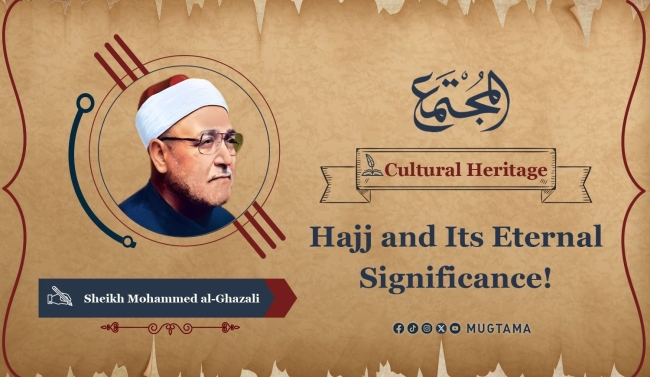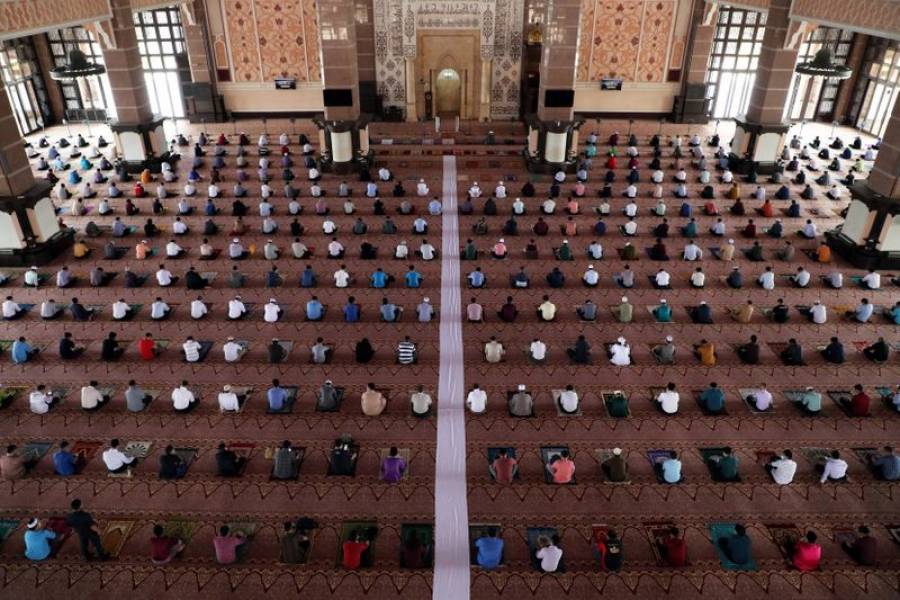Hajj and Its Eternal Significance!
What is the relationship between Islam and al-Masjid al-Haram (the Sacred Mosque)? And why must every capable person visit it, honoring?
In reality, several connections give the Hajj (pilgrimage) to the House a great significance. Al-Masjid al-Haram is the first mosque built on the face of the earth for the worship of Allah after the idols were destroyed. Its construction on the ruins of ancient idolatry symbolizes the victory of Tawheed (monotheism).
The builders of this Holy Mosque were two honored prophets; one of them was thrown into the fire as punishment for rejecting idol worship, which was Ibrahim (peace be upon him), who said, as mentioned in the Quran, “Indeed, I have turned my face toward He who created the heavens and the earth, inclining toward truth, and I am not of those who associate others with Allah. And his people argued with him. He said, 'Do you argue with me concerning Allah while He has guided me?'” (Al-Anam: 79-80). The other was Ismail, who submitted his neck for sacrifice when his father told him he was commanded to slaughter him, to which he responded, “He said, 'O my father, do as you are commanded. You will find me, if Allah wills, of the steadfast.'” (As-Saaffat: 102).
These two men, who were sincere and dedicated solely to Allah, are the ones who undertook the building of the Mosque—known as the Kaaba—to be a place for believers to gather to perform Salah.
Moreover, the Muslim Ummah is the result of a du’a answered during this construction. Allah says, “And [mention] when Abraham was raising the foundations of the House and [with him] Ishmael, [saying], 'Our Lord, accept [this] from us. Indeed You are the Hearing, the Knowing. Our Lord, and make us Muslims [in submission] to You and from our descendants a Muslim nation [in submission] to You. And show us our rites and accept our repentance. Indeed, You are the Accepting of repentance, the Merciful. Our Lord, and send among them a messenger from themselves who will recite to them Your verses and teach them the Book and wisdom and purify them. Indeed, You are the Exalted in Might, the Wise.'” (Al-Baqarah: 127-129)
This is a memory worthy of honor and commemoration. Perhaps one way to thank Allah is to revere a mosque whose construction was associated with du’a for future generations who have not yet come into existence. Who knows? Perhaps our guidance to Allah is part of the blessing of this accepted du’a!
Moreover, Salah—the foremost practical act of worship—is connected to this ancient House. Naturally, when a Muslim stands, bows, or prostrates, they only know that they are in the presence of Allah, the Lord of the East and the West. It is understood that one's face is directed solely to Allah during recitation of the Quran, glorification, and praise of Allah, and that all directions are equal in their material and moral value, with none being intended for sanctification.
However, Allah willed that the entire Muslim Ummah face a single qibla (Salah direction), linking the mosques of the five continents to the first mosque on earth and connecting the Muslim Ummah to their forefather, Ibrahim. This connection signifies that they do not deviate from the principles of the ancient prophecies; rather, it is those who associated others with Allah and corrupted the faith.
This is why the Quran states: “So from wherever you go out [for prayer, O Muhammad] turn your face toward al- Masjid al-Haram, and indeed, it is the truth from your Lord. And Allah is not unaware of what you do. And from wherever you go out [for prayer], turn your face toward al-Masjid al-Haram. And wherever you [believers] may be, turn your faces toward it in order that the people will not have any argument against you, except for those of them who commit wrong; so fear them not but fear Me. And [it is] so I may complete My favor upon you and that you may be guided.” (Al-Baqarah: 149-150)
For these historical and spiritual connections, Allah has obligated the Ummah to have every able person visit al-Masjid al-Haram at least once in their lifetime. This visit is governed by gentle teachings aimed at kindling feelings of certainty and fostering sincere devotion to the Lord of all worlds.
The words the pilgrims cry out while heading towards the Kaaba are filled with this high meaning, as they say, “Labbaika Allahumma labbaik, Labbaika la sharika Laka labbaik (I respond to Your call O Allah, I respond to Your call, and I am obedient to Your orders, You have no partner, I respond to Your call).” (Sahih al-Bukhari)
This Talbiyah feels like a response to the call that has resonated through the centuries, the call that Allah has revealed to Ibrahim: “And [mention, O Muhammad], when We designated for Abraham the site of the House, [saying], 'Do not associate anything with Me and purify My House for those who perform Tawaf and those who stand [in prayer] and those who bow and prostrate. And proclaim to the people the Hajj [pilgrimage]; they will come to you on foot and on every lean camel; they will come from every distant pass.'” (Al-Hajj: 26-27)
Indeed, people come, raising their voices with Talbiyah, and resound in harmony with all creatures praising their Lord. It is as if existence in these isolated and desolate places has suddenly transformed into demonstrations with no chants except dhikr, gratitude, glorification, and praise to Allah (SWT).
The Messenger of Allah (ﷺ) said: “There is no (pilgrim) who recites the Talbiyah but that which is to his right and left also recites it, rocks and trees and hills, to the farthest ends of the earth in each direction, from here and from there.” (Narrated by at-Tirmidhi)
The days of Hajj are a season of worship, devotion, turning to Allah, and constantly praising Him, preoccupied with Him above everything else. Allah says, “Hajj is [during] well-known months, so whoever has made Hajj obligatory upon himself therein [by entering the state of ihram], there is [to be for him] no sexual relations and no disobedience and no disputing during Hajj. And whatever good you do - Allah knows it. And take provisions, but indeed, the best provision is fear of Allah. And fear Me, O you of understanding.” (Al-Baqarah: 197)
The rituals of Hajj are not complicated. They involve the massive gathering at Arafat on the ninth day of Dhul-Hijjah until after sunset, followed by the Tawaf (circulating) around the Kaaba.
These are the key pillars of Hajj for those who intend it. There are other lighter or confirmed requirements, such as the Tawaf to greet the House upon arriving in Mecca, the stoning of the Jamarat, and the Sa'i (walking back and forth seven times) between Safa and Marwa.
Some people try to make the rituals of Hajj seem burdensome and difficult, but this is incorrect. Hajj is a delightful spiritual journey and a noble emotional pilgrimage. Allah has prescribed it to be a heartening experience, completing the intellectual foundation of Islam with a framework of memories and emotions.
Since the inception of Hajj in Islam, its grand season has been utilized for delivering important guidance and addressing critical issues. During the pilgrimage in the ninth year of Hijrah, it was declared that treaties made with the polytheists were null and void. These treaties had been honored only by Muslims, while the strong polytheists often violated and disregarded them.
Hence, in the ninth year, Allah declared disassociation from any alliances with them and warned them of retribution both in this world and the Hereafter.
In Hajjatul Wada (the Farewell Pilgrimage), the Prophet Muhammad (peace be upon him) delivered a profound humanistic sermon to the vast gathering of delegates. This sermon contained the highest principles and noblest objectives, serving as a truthful record of human rights and the freedoms of nations.
Hajj should remain the largest assembly of Muslims. Its time and place should continue to be the appointed occasion for monotheists from the east and the west to come together, remember Allah, and renounce Shaitan.
-------------------------------------------------------------
Taken from the book “This is Our Religion.”







